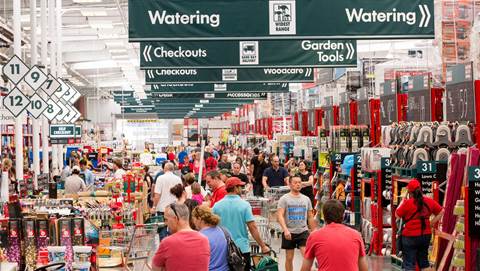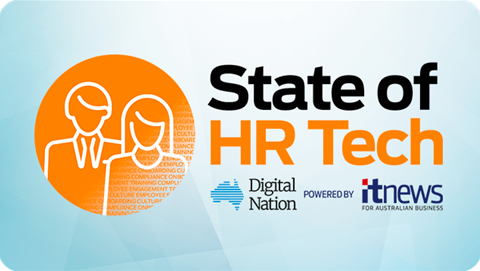Workplace health and safety continues to be a perennial issue in Australia, with work‑related injuries and illnesses impacting all industries and occupations.

This is set to change as rapid advances in AI and video capture technologies show real potential in improving worker safety.
According to Safe Work Australia, there have been more than 1850 traumatic workplace injury fatalities over the past ten years and around one in twelve Australian workers have made a serious workers’ compensation claim involving more than one week of working time lost.
The agency calculated that if work-related injuries and illnesses were prevented Australia’s economy would be $28.6 billion larger each year.
As organisations look for ways to reduce workplace injuries and illnesses, advanced technologies are being investigated to help in the fight for worker safety. One of the most promising is computer vision.
Integrating AI-powered platforms with real-time video capture from surveillance cameras, computer vision creates opportunities for organisations to improve worker safety and wellbeing by continuously monitoring facilities, plants and job sites.
It notifies workers of unsafe behaviours and conditions; improves environmental, health and safety (EHS) data collection and quality; and enables predictive analytics and forecasting for injuries and events.
Australia Post, for example, is using computer vision to detect team members moving into “unsafe zones” at facilities as a site safety initiative. Bayside Council in Sydney implemented computer vision to monitor and issue infringements for illegally parked vehicles in areas where it is unsafe for rangers to attend in person.
Gartner is seeing other applications in Australia’s heavy machinery industries, such as agriculture, mining, construction, engineering and manufacturing.
Potential uses
There are many ways computer vision has potential to improve worker safety. Behavioural monitoring and recognition capabilities can identify unsafe behaviour, such as workers running, unsafely using mobile phones, being aggressive or misusing equipment.
Advanced analytics applied to the gathered data can anticipate accidents, which can improve worker safety and overall performance.
Compliance monitoring can identify deviations from workplace policies and non-compliant actions, such as handling hazardous materials, exclusion zone entry or line crossing, product quality issues or using inappropriate protective equipment in unsafe environments.
Computer vision can be used for ergonomic applications to identify and evaluate poor posture, improper use of equipment, poor working practices and unsafe lifting. The data captured can inform changes in worker training, processes or equipment.
The technology can identify hazards within the workplace and alert workers to their existence, such as unguarded and moving equipment parts, electrical hazards or unsafe practices in elevated work areas.
Monitoring the interaction between powered industrial vehicles and pedestrians, and monitoring driver fatigue of those vehicles can be used in situations such as collision avoidance.
In addition, by capturing unsafe behaviours and improving hazard reporting, computer vision can enhance worker training by providing real-life examples and allow for more targeted training strategies to reduce identified areas of risk.
Challenges to adoption
While computer vision capabilities will continue to be enhanced in the future by advanced predictive and prescriptive analytics for accident prevention, organisations need to overcome current adoption challenges due to digital immaturity, poor safety culture and organisational politics.
Many organisations have underinvested in EHS technology, so they may lack the digital foundation to support computer vision technologies.
This can be counteracted by connecting their digital transformation roadmaps to their EHS strategies.
This helps improve data quality; provide visibility into worker behaviour and facility conditions; increase resource efficiency; reduce costs associated with workplace injuries; and prevent serious injuries and fatalities.
In organisations where safety culture is poor or immature, constant monitoring of employee behaviour may be met with concern.
Employees may not understand what activities are being monitored, where the information is going and how the data is being used. This concern may reach union workers, HR or legal due to privacy concerns and ownership issues.
To address this, an implementation plan should be created alongside frontline workers, operations supervisors and HR to mitigate risk and ensure employee buy-in.
It also avoids potential conflicts due to internal organisational politics, by engaging with all relevant stakeholders to capture requirements and help manage the trade-offs between what is best for individual departments and for the whole organisation.
Moving from detection to prevention
Advances in computer vision technology, particularly around generative AI, herald a step improvement in an organisation’s ability to analyse unstructured images and video streams. These capabilities will improve the performance and reliability of computer vision behaviour recognition models, a critical capability in worker safety monitoring.
In the next three to five years, Gartner expects early mainstream organisational adoption of worker safety solutions using computer vision.
About the author
Nick Ingelbrecht is a senior director analyst with Gartner's Technology and Service Provider Research organisation, focused on computer vision, emerging trends and technologies, video and image analytics and physical security.



_(20).jpg&h=140&w=231&c=1&s=0)
.png&h=140&w=231&c=1&s=0)




_(26).jpg&w=100&c=1&s=0)

 iTnews Executive Retreat - Security Leaders Edition
iTnews Executive Retreat - Security Leaders Edition












_(1).jpg&h=140&w=231&c=1&s=0)



